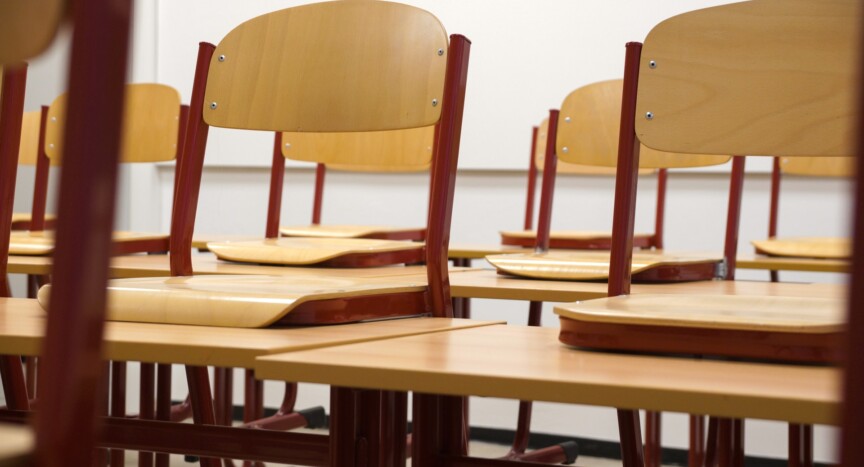This is a summary of the policy brief from Romy Oomens for the course The Social Structure of Western Societies. The author reports that aside from the primary effects of the pandemic (i.e. deteriorating health and mortality) [1], there have been secondary effects [2]. More specifically, in terms of education. To avoid the spread of coronavirus, multiple countries enforced the closure of schools [3] and the provision of remote education to reduce learning loss [4]. Romy highlights that whilst all students were affected by offline learning, those who were the most affected were students of a lower socioeconomic background [1]. This phenomenon was seen to be especially true for countries which already had socio-economic inequalities, like the U.K [5][6]. The author reports previous findings suggesting that people’s ability to move to different social classes (i.e. social mobility) [7], has decreased in the United Kingdom [5][6]. What is generally seen as the main driving effect of social mobility is education [8]. As the closing of educational facilities has strengthened the existing socio-economic disparities and thus, educational inequalities, climbing the social ladder in the U.K. has become even harder for disadvantaged children. With this policy brief, the author, therefore, aims to look more deeply into the causes and consequences of the growing educational disparities to prevent a generational catastrophe in the U.K.
The British Context
Romy reported that one of the main reasons for the decline of social mobility in contemporary Britain [5] [6] is due to the expansion of the education system over the past decades [5]. Instead of improving equal opportunities for all socioeconomic classes, it has unfairly benefited children of privileged families [5][6]. Social inequalities in education persist despite there being social policies targeted to reduce the effect of family background on education [8]. This is due to the big attainment gap between students with advantaged and disadvantaged backgrounds. The latter is twice as likely to abandon formal education without the compulsory GSCEs that many employers and colleges require compared to advantaged students [9][10]. This gap increases with time away from school.
“All students were affected by offline learning, those who were the most affected were students of a lower socioeconomic background”
Disproportionate effect of school closures

In the policy brief, the author aims to answer: Why is it that children of parents with a lower socio-economic status are affected more than others? According to previous studies, it is due to the lack of parental resources and parental support. Due to the lack of resources, children that have lower socioeconomic backgrounds, are more likely to lose focus whilst studying and get less work done as they often do not have access to a private study space where they can shut off external distractions [11]. Another aspect related to the lack of resources is that disadvantaged children more likely to be digitally excluded [4]. This means that they have inadequate access to the internet and/or do not have the necessary equipment for remote learning [4]. As mentioned, disadvantaged children also lack parental support. This is due to two reasons, first, parents of lower socioeconomic backgrounds often lack the digital skills [12] needed to assist their children during technical difficulties [11]. Second, parents of lower socioeconomic status are less able to work from home [11], thus, they do not have a lot of time to devote to supporting their children [13].
Implications and Recommendations
Based on the research done, Romy identified three potential implications for the future. According to the author, if the gap continues to widen there will be long-term effects on educational progression (i.e. academic underachievement, dropping out) [14][15], worsening labour market outcomes compared to prior disadvantaged students [16] and an increase of the effect of digital inequalities in the future if remote education becomes the norm.
The findings of Romy’s policy brief emphasize that home learning should be more equal and that existing and pandemic dependent gaps in attainment should be reduced. For this reason, the author suggests policymakers take three actions. The first is to improve parents’ digital skills by proving them with training so they can support their children if the circumstances require them to. The second suggests that each municipality should provide study places for children outside of the home so they also have a chance to tune out external distractions and focus. Lastly, Romy suggests that children of lower-socioeconomic status should be offered extra resources and support to help them catch up. In terms of costs, the author states that should be set against the high societal costs of academic underperformance, high dropout rate and limited labour market opportunities for the disadvantaged youth [15].
Click here to read their research paper:
References
[1] Ribarovska, A. K., Hutchinson, M. R., Pittman, Q. J., Pariante, C., & Spencer, S. J. (2021). Gender inequality in publishing during the COVID-19 pandemic. Brain, behavior, and immunity, 91, 1.
[2] Nicola, M., Alsafi, Z., Sohrabi, C., Kerwan, A., Al-Jabir, A., Iosifidis, C., Agha, M., & Agha, R. (2020). The socio-economic implications of the coronavirus pandemic (COVID-19): A review. International journal of surgery, 78, 185-193.
[3] UNESCO. (2020). Educational Disruption and Response. Retrieved from: https://en.unesco.org/covid19/educationresponse
[4] Bayrakdar, S., & Guveli, A. (2020). Inequalities in home learning and schools’ provision of distance teaching during school closure of COVID-19 lockdown in the UK (ISER Working Paper No. 2020-09). Retrieved from ECONSTOR website: https://www.econstor.eu/bitstream/10419/227790/1/1703719352.pdf
[5] Machin, S., & Vignoles, A. (2004). Educational inequality: the widening socio‐economic gap. Fiscal Studies, 25(2), 107-128.
[6] Blanden, J., & Machin, S. (2013). Educational inequality and the expansion of UK higher education. Scottish Journal of Political Economy, 60(5), 578-596.
[7] Collins. (n.d.). Social mobility. In Collins English Dictionary. Retrieved from: https://www.collinsdictionary.com/dictionary/english/social-mobility
[8] Brown, P. (2013). Education, opportunity and the prospects for social mobility. British Journal of Sociology of Education, 34(5-6), 678-700.
[9] Cullinane, C., & Montacute, R. (2020). COVID-19 and social mobility impact brief #1:School closures. Retrieved from The Sutton Trust website: https://www.suttontrust.com/wp-content/uploads/2021/01/School-Shutdown-Covid-19.pdf
[10] Wolf, A. (2011). Review of vocational education: the Wolf report. Retrieved from http://www7.bbk.ac.uk/linkinglondon/resources/fehe-policy-and-advocacy/report_Feb2011_The_Wolf_Report1.pdf
[11] Di Pietro, G., Biagi, F., Costa, P., Karpiński, Z., & Mazza, J. (2020). The likely impact of COVID-19 on education: Reflections based on the existing literature and recent international datasets (Report No. JRC 30275). Retrieved from JRC website: https://publications.jrc.ec.europa.eu/repository/bitstream/JRC121071/jrc121071.pdf?mc_cid=ecbb7c6ba9&mc_eid=26e959399a
[12] Zhang, D., & Livingstone, S. (2019). Inequalities in how parents support their children’s development with digital technologies. Retrieved from LSE Department of Media and Communications website: http://www.lse.ac.uk/media-and-communications/assets/documents/research/preparingfor-a-digital-future/P4DF-Report-4.pdf
[13] Vigdor, J. L., Ladd, H. F., & Martinez, E. (2014). Scaling the digital divide: Home computer technology and student achievement. Economic Inquiry, 52(3), 1103-1119.
[14] Reimers, F. M., Schleicher, A., & Ansah, G. A. (2020). Schooling disrupted, schooling rethought: how the COVID-19 pandemic is changing education. Retrieved from OECD website: https://read.oecd-ilibrary.org/view/?ref=133_133390-1rtuknc0hi&title=Schooling-disrupted-schooling-rethought-How-the-Covid-19-pandemic-is-changing-education&utm_source=Adestra&utm_medium=email&utm_content=Learn%20more&utm_campaign=OECD%20Education%20%26%20Skills%20Newsletter%3A%20June%202020&utm_term=edu
[15] Darmody, M., Smyth, E., & Russell, H. (2021). Impacts of the COVID-19 control measures on widening educational inequalities. Young, 29(4), 366-380.
[16] Blundell, R., Cribb, J., McNally, S., Warwick, R., & Xu, X. (2021). Inequalities in education, skills and incomes in
the UK: the implications of the COVID-19 pandemic. Retrieved from the Institute for Fiscal Studies website: https://www.thebritishacademy.ac.uk/documents/3024/COVID-decade-inequalities-education-skllls-incomes-UK-Institute-Fiscal-Studies.pdf







